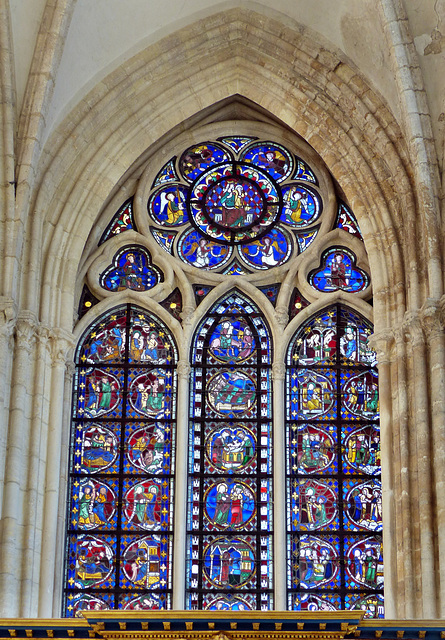Saint-Sulpice-de-Favières - Saint-Sulpice
Saint-Sulpice-de-Favières - Saint-Sulpice
Saint-Sulpice-de-Favières - Saint-Sulpice
Saint-Sulpice-de-Favières - Saint-Sulpice
Via Turonensis - GR655ET
Via Turonensis - GR655ET
Étampes - Saint-Basile
Étampes - Château d'Étampes
Étampes - Notre-Dame-du-Fort
Étampes - Notre-Dame-du-Fort
Étampes - Notre-Dame-du-Fort
Étampes - Notre-Dame-du-Fort
Étampes - Notre-Dame-du-Fort
Étampes - Notre-Dame-du-Fort
Étampes - Notre-Dame-du-Fort
Étampes - Notre-Dame-du-Fort
Étampes - Notre-Dame-du-Fort
Étampes - Notre-Dame-du-Fort
Étampes - Notre-Dame-du-Fort
Étampes - Notre-Dame-du-Fort
Étampes - Notre-Dame-du-Fort
Étampes - Notre-Dame-du-Fort
Étampes - Notre-Dame-du-Fort
Étampes - Notre-Dame-du-Fort
Étampes - Notre-Dame-du-Fort
Étampes - Saint-Gilles
Étampes - Saint-Gilles
Étampes - Saint-Martin
Étampes - Saint-Martin
Via Turonensis
Guillerval - Saint-Gervais-Saint-Protais
Angerville - Saint-Pierre-et-Saint-Eutrope
Via Turonensis
Saint-Sulpice-de-Favières - Saint-Sulpice
Saint-Sulpice-de-Favières - Saint-Sulpice
Saint-Sulpice-de-Favières - Saint-Sulpice
Saint-Sulpice-de-Favières - Saint-Sulpice
Saint-Sulpice-de-Favières - Saint-Sulpice
Saint-Sulpice-de-Favières - Saint-Sulpice
Saint-Sulpice-de-Favières - Saint-Sulpice
Saint-Sulpice-de-Favières - Saint-Sulpice
Saint-Sulpice-de-Favières - Saint-Sulpice
Saint-Sulpice-de-Favières - Saint-Sulpice
Via Turonensis - GR655ET
Via Turonensis - GR655ET
Via Turonensis - GR655ET
Boissy-sous-Saint-Yon - Saint-Thomas-Becket
Boissy-sous-Saint-Yon - Saint-Thomas-Becket
Arpajon - Saint-Clément
Arpajon - Launderette
Arpajon - Launderette
Arpajon - La Halle
Longpont-sur-Orge - Notre-Dame-de-Bonne-Garde
Longpont-sur-Orge - Notre-Dame-de-Bonne-Garde
Longpont-sur-Orge - Notre-Dame-de-Bonne-Garde
Longpont-sur-Orge - Notre-Dame-de-Bonne-Garde
Saulx-les-Chartreux - Notre-Dame de l’Assomption d…
Chilly-Mazarin - Station
Chilly-Mazarin - Château
Château Le Marais ( 91 )
Dans un magnifique parc
Paysage
Paysage
Paysage
Paysage
Location
Lat, Lng:
Lat, Lng:
You can copy the above to your favourite mapping app.
Address: unknown
Lat, Lng:
You can copy the above to your favourite mapping app.
Address: unknown
See also...
Keywords
Authorizations, license
-
Visible by: Everyone -
All rights reserved
-
308 visits
Saint-Sulpice-de-Favières - Saint-Sulpice


A first church may have existed around 1100. Some parts of a church erected around 1170 still exist. This was already dedicated to Saint Sulpitius the Pious ("Sulpice le Pieux"), chaplain on the court of Clotaire II, King of the Franks, and later Bishop of Bourges. As the church kept relics of Saint-Sulpice, this was a place for many pilgrims from the very beginning.
The construction of the High Gothic church seen today began around 1260. It is for sure the work of an experienced architect, who even may have had ties to the royal court, as the building was financed by Louis IX (aka "Saint Louis") and the Bishopric of Paris. By promoting the pilgrimage to this church, Louis IX from the House of Capet tracked his roots over six centuries back to Merovingian Clotaire II.
This church was built during the "siècle d’or de St. Louis", when the Kingdom of France was politically and economically at its height in Europe.
Of course, such a "royal symbol" had to suffer in the centuries to come. In 1652, during the civil wars ("Fronde"), the church was set on fire. The roof burnt down and the vaultings over four bays collapsed. During the French Revolution the church was severely damaged and later converted into a "Temple of Reason".
The church is known for the elegant, delicate High Gothic architecture and for the beautiful stained glass windows from the 13th century.
The construction of the High Gothic church seen today began around 1260. It is for sure the work of an experienced architect, who even may have had ties to the royal court, as the building was financed by Louis IX (aka "Saint Louis") and the Bishopric of Paris. By promoting the pilgrimage to this church, Louis IX from the House of Capet tracked his roots over six centuries back to Merovingian Clotaire II.
This church was built during the "siècle d’or de St. Louis", when the Kingdom of France was politically and economically at its height in Europe.
Of course, such a "royal symbol" had to suffer in the centuries to come. In 1652, during the civil wars ("Fronde"), the church was set on fire. The roof burnt down and the vaultings over four bays collapsed. During the French Revolution the church was severely damaged and later converted into a "Temple of Reason".
The church is known for the elegant, delicate High Gothic architecture and for the beautiful stained glass windows from the 13th century.
- Keyboard shortcuts:
Jump to top
RSS feed- Latest comments - Subscribe to the comment feeds of this photo
- ipernity © 2007-2024
- Help & Contact
|
Club news
|
About ipernity
|
History |
ipernity Club & Prices |
Guide of good conduct
Donate | Group guidelines | Privacy policy | Terms of use | Statutes | In memoria -
Facebook
Twitter

Sign-in to write a comment.